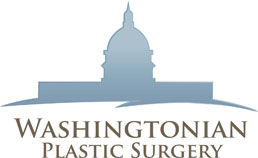While rhinoplasty typically has an extremely high rate of patient satisfaction, there are instances where an individual may experience unsatisfactory cosmetic and/or functional outcomes.
When this occurs, many men and women elect to undergo a revision rhinoplasty to correct nasal deformities, enhance facial harmony, and address breathing impairments.
So, what does a revision rhinoplasty entail?
Continue reading to learn all about revision rhinoplasty and what patients can expect should they decide to have this surgical procedure.
Why Do Patients Seek Revision Rhinoplasty?
Patients that have undergone one or more prior rhinoplasty procedures may seek a revision rhinoplasty for further improvement to nasal appearance or function.
What Are Some Challenges that Can Present with Revision Rhinoplasty?
Due to the complex structure of the nose and its central position on the face, rhinoplasty is one of the most difficult surgeries to skillfully perform. This is especially true of revision rhinoplasty that can present with its own set of unique challenges.
One of the most important hurdles to overcome is managing patient expectations and helping them understand that the additional surgery may be unable to fully address all of their concerns.
What’s more, the formation of scar tissue from a prior rhinoplasty can place limitations on even the most experienced and talented plastic surgeon and impact the final outcome.
Additionally, revision rhinoplasty often involves transferring cartilage to replace damage or deficient cartilage in the nasal tip, bridge, or septum.
Finally, men and women seeking revision rhinoplasty may require repair of a collapsed tip, that’s causing a nasal obstruction, or a deviated septum, that’s resulting in cosmetic and functional issues.
For all of these reasons, it is essential that patients select a board-certified plastic surgeon that has the training and experience to expertly address these issues and provide the best results possible.
How is Revision Rhinoplasty Performed?
A revision rhinoplasty is designed to reshape the nose, correct nasal deformities, and enhance airway function. During the procedure, a plastic surgeon will typically remove a small piece of cartilage from the ear or rib to support the nasal tip, bridge, or septum.
Temporalis fascia, taken from a small incision in the hairline, may also be used to serve as a natural filler for soft tissue irregularities.
If you are considering a revision rhinoplasty and seeking a board-certified plastic surgeon with extensive experience, please call our office today to schedule a comprehensive consultation with Dr. Navin Singh.



